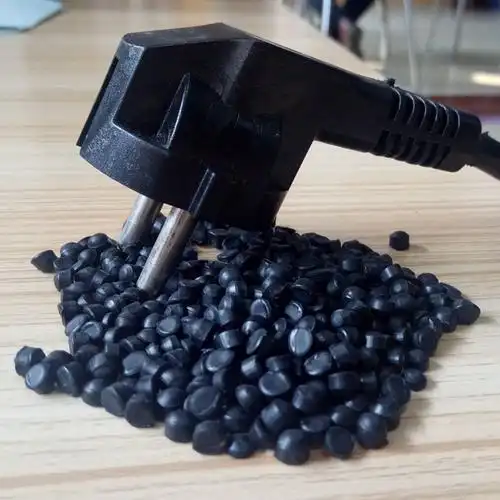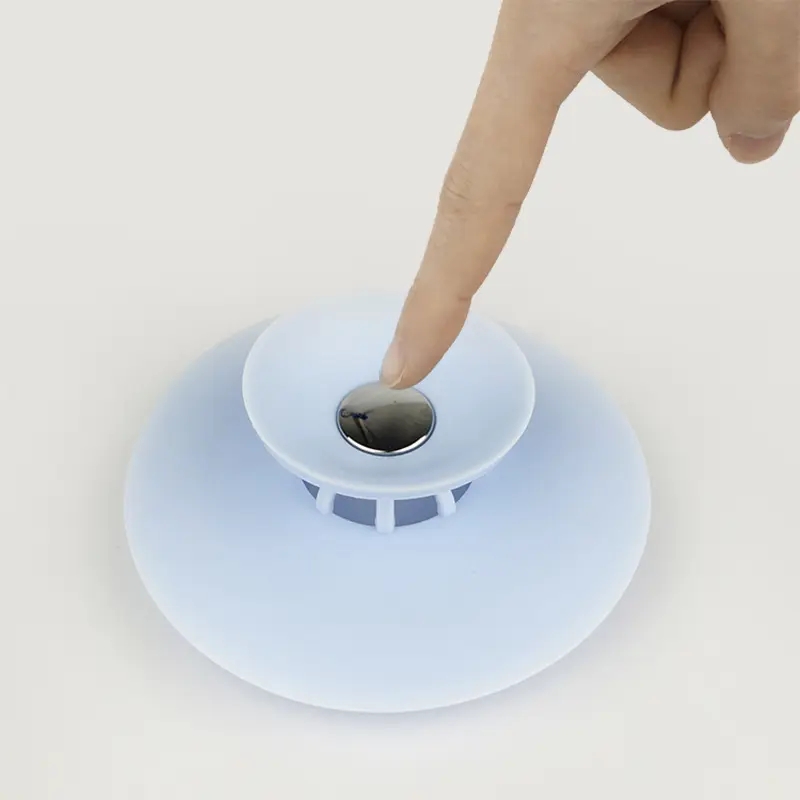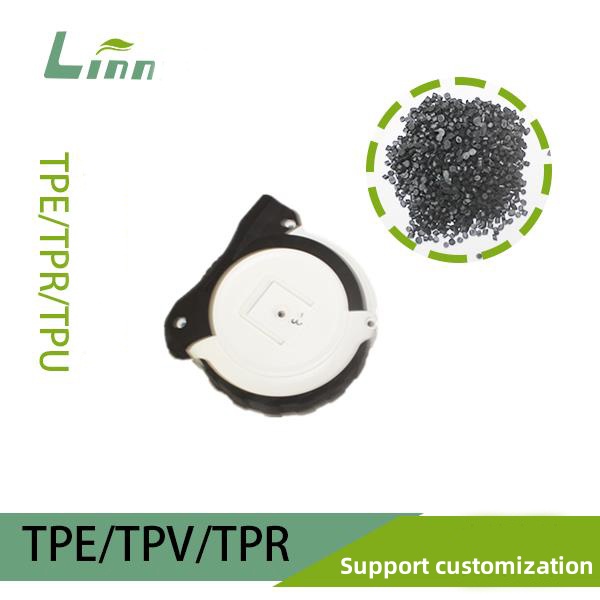In the vast world of materials, especially in the plastics and rubber industry, differentiating between different types of materials can be a real challenge. TPR (Thermoplastic Rubber) is often confused with other materials due to its unique combination of properties. As someone who has been in this industry for many years, I have come across many situations where people need to accurately identify TPR. In this article, I will share my experience and knowledge to help you determine if a material is TPR.
1. Understanding TPR Material Basics
Definition and Composition
TPR is a type of polymer material that combines the properties of both thermoplastics and rubbers. It’s essentially a blend of thermoplastic polymers and rubber components. The thermoplastic part gives it the ability to be melted and re – molded multiple times, similar to other plastics. The rubber component, on the other hand, provides elasticity, flexibility, and a good feel. The exact composition can vary depending on the manufacturer and the intended application. Some TPRs may have a higher proportion of rubber for better elasticity, while others may have more thermoplastic polymers for improved strength and processability.

Common Applications
TPR is widely used in various industries. In the consumer goods sector, you can find it in products like shoe soles, toys, and handles for tools. In the automotive industry, it’s used for gaskets, seals, and interior trim components. Its versatility comes from its ability to offer a balance of properties that meet the requirements of different applications.
2. Visual and Tactile Identification
Appearance
Color and Luster
TPR can come in a wide range of colors, from bright and vibrant to more subdued tones. It typically has a smooth surface with a certain level of luster, but not as glossy as some pure plastics. The surface may also have a slightly matte finish in some cases, depending on the additives and processing methods used.
Texture
When you touch TPR, it feels soft and flexible. It has a rubber – like texture, but it’s not as sticky as some natural rubbers. You can press your finger into it, and it will deform slightly and then return to its original shape when you release the pressure. This elasticity is one of the key characteristics that can help you identify TPR.
Transparency
Most TPR materials are not transparent. They are usually opaque or semi – opaque. If you come across a material that is highly transparent, it’s less likely to be TPR, although there may be some special formulations that allow for a certain degree of transparency.
3. Physical Property Tests
Hardness Test
Shore Hardness Scale
The hardness of TPR can vary widely, typically ranging from Shore A 30 to Shore A 90. You can use a Shore A durometer to measure the hardness of the material. Place the durometer on the surface of the material and apply a consistent pressure. The reading on the durometer will give you an indication of the hardness. Different applications of TPR require different hardness levels. For example, shoe soles may have a higher hardness for durability, while toy handles may be softer for a more comfortable grip.
Comparison with Known Standards
If you have access to samples of known TPR materials with different hardness values, you can compare the hardness of the material in question with these standards. This can help you get a better idea of whether it falls within the typical hardness range of TPR.

Elasticity and Resilience
Elongation at Break
TPR has good elongation at break, which means it can be stretched to a significant extent before breaking. You can perform a simple tensile test by cutting a small strip of the material and attaching it to a testing machine. Gradually apply a pulling force until the material breaks. Record the length at which it breaks and calculate the elongation percentage. TPR typically has an elongation at break of 200% – 800%, depending on its composition.
Resilience Test
Resilience refers to the ability of the material to recover its original shape after being deformed. Drop a small ball or a weighted object onto the surface of the material from a certain height and observe how quickly it bounces back. TPR has a relatively good resilience, although it may not bounce as high as some pure rubber materials.
4. Thermal Property Tests
Melting Point and Glass Transition Temperature
Differential Scanning Calorimetry (DSC)
DSC is a more advanced method for determining the thermal properties of a material. It can measure the melting point and glass transition temperature of TPR. The melting point of TPR is usually in the range of 100°C – 200°C, depending on its composition. The glass transition temperature is the temperature at which the material changes from a glassy state to a rubbery state. For TPR, the glass transition temperature is typically below room temperature, which is why it feels soft and flexible at normal temperatures.
Simple Heat Test
You can also perform a simple heat test at home or in a basic laboratory setting. Heat a small piece of the material with a heat gun or in an oven at a low temperature. Observe when the material starts to soften and deform. If it softens at a relatively low temperature (around 100°C – 150°C) and can be easily molded, it’s more likely to be TPR. However, this method is not as accurate as DSC and should be used as a preliminary test.
Thermal Stability
TPR has good thermal stability within its operating temperature range. You can expose the material to elevated temperatures for a certain period and then check for any changes in its physical properties, such as hardness, color, or shape. If the material maintains its properties after exposure to moderate heat, it indicates good thermal stability, which is a characteristic of TPR.
5. Chemical Property Tests
Solvent Resistance
Common Solvents
TPR has a certain level of resistance to common solvents such as water, alcohols, and some oils. You can place a small piece of the material in a container with the solvent and observe any changes over time. If the material does not dissolve, swell significantly, or change its physical properties after being in contact with the solvent for a few hours or days, it shows good solvent resistance, which is typical of TPR.
Specific Solvent Tests
For more accurate results, you can use specific solvents that are known to react with different types of materials. For example, if the material dissolves in acetone, it’s less likely to be TPR, as TPR usually has good resistance to acetone.

Acid and Alkali Resistance
TPR also has some resistance to mild acids and alkalis. You can expose the material to dilute acid or alkali solutions and check for any signs of corrosion, discoloration, or degradation. If the material remains relatively unchanged after exposure, it indicates good acid and alkali resistance, which is a property of TPR.
6. Identification Methods Summary Table**
| Method | Description | Advantages | Disadvantages |
|---|---|---|---|
| Visual and Tactile | Observing appearance, texture, and transparency; feeling the hardness and elasticity | Quick and easy to perform; no special equipment required | Subjective; may not be accurate for all cases |
| Physical Property Tests | Measuring hardness, elongation at break, and resilience | Provides quantitative data; can accurately identify material properties | Requires special equipment; may be time – consuming |
| Thermal Property Tests | Determining melting point, glass transition temperature, and thermal stability using DSC or simple heat tests | Gives insight into the material’s behavior at different temperatures | DSC is expensive; simple heat tests are less accurate |
| Chemical Property Tests | Testing solvent resistance, acid resistance, and alkali resistance | Can distinguish TPR from materials that react differently to chemicals | Requires access to various chemicals; may take time to observe results |
7. Advanced Identification Techniques
Fourier Transform Infrared Spectroscopy (FTIR)
FTIR is a powerful analytical technique that can identify the chemical composition of a material. It works by measuring the absorption of infrared light by the material’s chemical bonds. Each type of material has a unique FTIR spectrum. By comparing the spectrum of the unknown material with the spectra of known TPR materials, you can accurately determine whether it is TPR. This method is highly accurate but requires specialized equipment and expertise to operate.
Gas Chromatography – Mass Spectrometry (GC – MS)
GC – MS is used to analyze the volatile components of a material. It can separate and identify the different chemicals present in the material based on their mass and retention times. While it may not directly identify TPR, it can provide information about the additives and impurities in the material, which can be useful in combination with other identification methods.

8. Real – World Examples of Identification
Example 1: Identifying TPR in a Toy
A customer brought a toy to me and asked if it was made of TPR. First, I performed a visual and tactile inspection. The toy had a soft, rubber – like feel and a smooth, slightly matte surface. I then measured its hardness using a Shore A durometer, and it fell within the typical range of TPR. To further confirm, I conducted a simple solvent test by placing a small piece of the toy in water and alcohol. It did not show any signs of dissolution or swelling, indicating good solvent resistance. Based on these tests, I was able to conclude that the toy was likely made of TPR.
Example 2: Distinguishing TPR from Other Materials in an Industrial Part
In an industrial setting, there was a need to distinguish between TPR and another similar – looking material used in a sealing application. I used FTIR to analyze the chemical composition of both materials. The FTIR spectrum of the unknown material matched closely with the spectrum of a known TPR material, confirming that it was indeed TPR. This was crucial for ensuring the correct material was being used in the application, as different materials may have different performance characteristics.
Related Questions and Answers
Q1: Can TPR be confused with PVC?
A: Yes, TPR and PVC (Polyvinyl Chloride) can sometimes be confused. PVC can also be made soft and flexible with the addition of plasticizers. However, there are some differences. TPR has a more rubber – like feel and better elasticity compared to PVC. In terms of thermal properties, TPR has a lower melting point than PVC. You can also perform a solvent test; PVC may dissolve or swell in certain solvents like tetrahydrofuran, while TPR has better resistance to these solvents.
Q2: How can I tell if a material is TPR or silicone?
A: Silicone and TPR have distinct differences. Silicone is usually more transparent and has a higher temperature resistance than TPR. It also has a different texture; silicone feels more slippery and has a lower coefficient of friction. You can perform a heat test; silicone can withstand higher temperatures without deforming as easily as TPR. Additionally, silicone has a unique odor when burned, which is different from the smell of burning TPR.

Q3: Is there a simple way to identify TPR at home without special equipment?
A: While it may not be as accurate as using specialized equipment, you can perform some basic tests at home. First, observe the material’s appearance and feel its texture. If it’s soft, flexible, and has a rubber – like feel, it could be TPR. Then, perform a simple heat test by heating a small piece with a heat gun or in an oven at a low temperature. If it softens at around 100°C – 150°C and can be easily molded, it’s more likely to be TPR. You can also do a solvent test by placing it in water or alcohol and checking for any changes.
Q4: Can the color of a material affect its identification as TPR?
A: The color of a material alone cannot determine whether it is TPR. TPR can be manufactured in a wide range of colors, and other materials can also be dyed to look similar. However, if you notice that the color is very unusual or does not match the typical colors of TPR products in a particular application, it may raise some doubts. But you should still rely on other physical, thermal, and chemical property tests for accurate identification.
Q5: How often should I perform identification tests if I’m working with TPR materials regularly?
A: If you’re working with TPR materials regularly, it’s a good practice to perform identification tests periodically, especially when you receive new batches of materials or when there are changes in the supply chain. This can help ensure that you’re using the correct material and that it meets the required specifications. For critical applications, you may want to perform tests more frequently, such as before each production run.
In conclusion, identifying whether a material is TPR requires a combination of visual and tactile inspection, physical property tests, thermal property tests, and chemical property tests. Advanced techniques like FTIR and GC – MS can provide even more accurate results. By understanding the characteristics of TPR and using these identification methods, you can confidently determine whether a material is TPR or not, which is essential for various applications in different industries.





